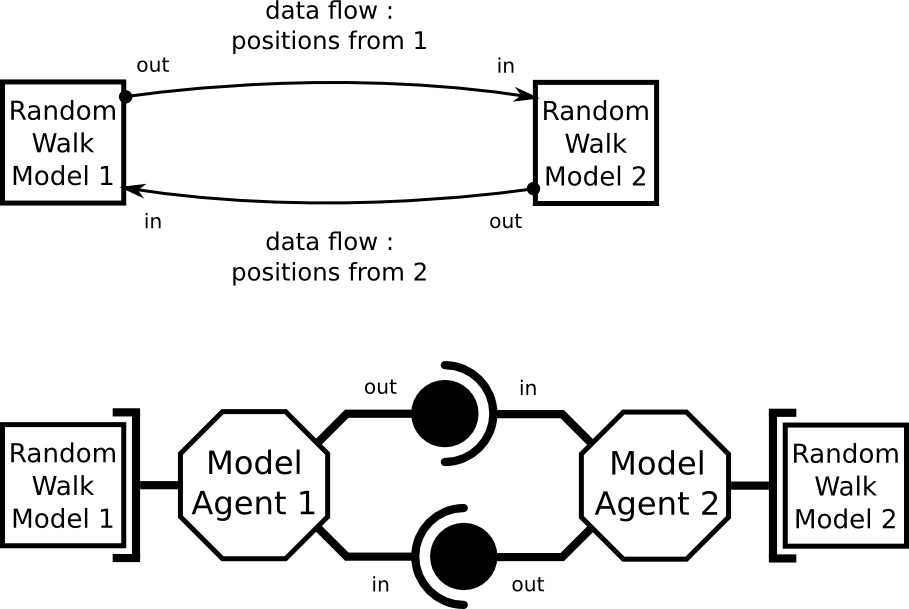The Netlogo models specifications available here and here. The exchanged data will be here the walkers positions (x,y) and the walker ID. The output port of one model is linked to the input of the other.


/**
* This class represent one part (IN port) of the coupling artefact that allows
* the agent to read data from it. In this implementation the coupling-artefact
* is in charge of the agents positions.
*
* @author Julien Siebert
* @since Darjeeling
*/
public class IPCA_ExchangedTurtles2 extends InputPort<ExchangedTurtles2> implements
JmsPort {
// jms parameters
private String topicName;
private String connectionFactoryName;
// end of jms parameters
/**
* COnstructor
*/
public IPCA_ExchangedTurtles2(Class<ExchangedTurtles2> ObjectClassToSendToJms,
String NameOfInputPortToJms) {
super(ObjectClassToSendToJms, NameOfInputPortToJms);
setJMSConnexionParameters();
init();
}
public void init() {
try {
jmsInputBinding.init(topicName, connectionFactoryName);
} catch (NamingException e) {
e.printStackTrace();
} catch (JMSException e) {
e.printStackTrace();
}
}
public void setJMSConnexionParameters() {
topicName = "shared_data";
connectionFactoryName = "shared_data_topic_connection_factory";
}
}
/**
* This class represent one part (OUT port) of the coupling artefact that allows
* the agent to read data from it. In this implementation the coupling-artefact
* is in charge of the agents positions.
*
* @author Julien Siebert
* @since Darjeeling
*/
public class OPCA_ExchangedTurtles1 extends OutputPort<ExchangedTurtles1> implements
JmsPort {
// jms parameters
private String topicName;
private String connectionFactoryName;
// end of jms parameters
/**
* Constructor
*/
public OPCA_ExchangedTurtles1(Class<ExchangedTurtles1> ObjectClassToReadFromJms,
String NameOfOutputPortFromJms) {
super(ObjectClassToReadFromJms, NameOfOutputPortFromJms);
setJMSConnexionParameters();
init();
}
public void init() {
try {
jmsOutputBinding.init(topicName, connectionFactoryName);
} catch (NamingException e) {
e.printStackTrace();
} catch (JMSException e) {
e.printStackTrace();
}
}
public void setJMSConnexionParameters() {
topicName = "shared_data";
connectionFactoryName = "shared_data_topic_connection_factory";
}
}